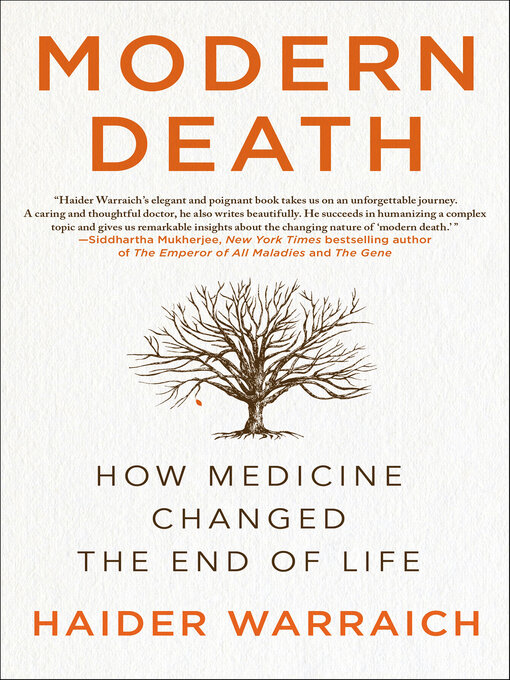There is no more universal truth in life than death. No matter who you are, it is certain that one day you will die, but the mechanics and understanding of that experience will differ greatly in today's modern age. Dr. Haider Warraich is a young and brilliant new voice in the conversation about death and dying started by Dr. Sherwin Nuland and Atul Gawande. Dr. Warraich takes a broader look at how we die today, from the cellular level up to the very definition of death itself.
The most basic aspects of dying—the whys, wheres, whens, and hows—are almost nothing like what they were mere decades ago. Beyond its ecology, epidemiology, and economics, the very ethos of death has changed. Modern Death, Dr. Warraich's debut book, will explore the rituals and language of dying that have developed in the last century, and how modern technology has not only changed the hows, whens, and wheres of death, but the what of death.
Delving into the vast body of research on the evolving nature of death, Modern Death will provide readers with an enriched understanding of how death differs from the past, what our ancestors got right, and how trends and events have transformed this most final of human experiences.
- Available Now
- New Ebooks
- New for Kids
- New for Teens
- Most Popular
- Something Different
- See all ebooks collections
- Available Now
- New Audiobooks
- New for Kids
- New for Teens
- Most Popular
- Something Different
- See all audiobooks collections
- Most Popular
- News & Politics
- Just Added
- Entertainment News
- Food & Drink
- Crafts & DIY Magazines
- Health, Fitness & Wellness
- Revistas
- 杂志
- Sports
- Business
- Fashion
- Art
- See all magazines collections
- Audiolibros
- Revistas
- Novedades
- Libros Bilingües Para Niños
- Novela Histórica
- Realismo Mágico
- Voces Propias
- Celebra el Mes de la Herencia Hispana - Adultos
- Primeros Lectores
- Cómics y Novelas Gráficas
- Embarazo Saludable y Bebé Sano 👶 🍼
- See all español collections




